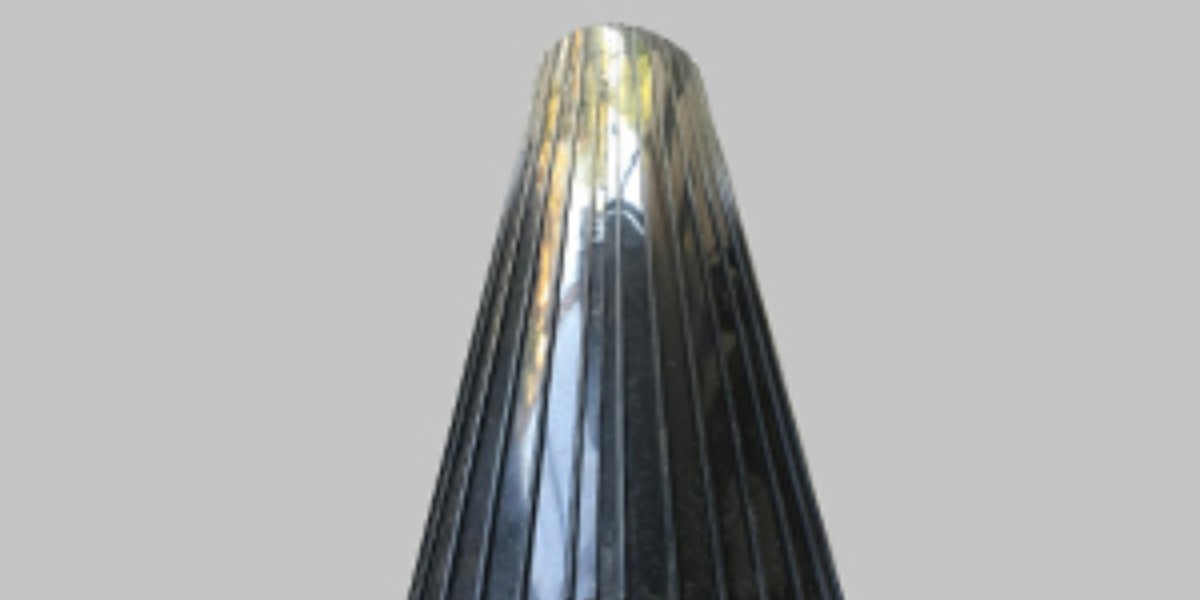High-Density Polyethylene (HDPE) T Rib Liner Sheets are an innovative solution in industries where corrosion and chemical resistance are critical factors. These liner sheets are widely used to protect concrete and steel structures from aggressive environmental conditions, chemicals, and wear over time. From wastewater treatment plants to sewer systems, HDPE T Rib Liner Sheets are designed to offer exceptional durability, resistance, and protection, thereby extending the life of infrastructure significantly.
This article will explore the properties, applications, and advantages of HDPE T-Rib Liner Sheets Installation, including their environmental impact and frequently asked questions (FAQs), to provide you with a comprehensive understanding of why these sheets are a reliable and essential option for construction and industrial applications.
What Are HDPE T Rib Liner Sheets?
HDPE T Rib Liner Sheets are a specialized type of High-Density Polyethylene (HDPE) liner that features a ribbed structure for enhanced adhesion to concrete surfaces. The "T" shape of the ribs ensures that the sheet locks securely to the structure, providing a seamless and secure bond. These liners are used primarily to protect concrete or steel structures from corrosive chemicals, gases, and liquids.
HDPE itself is a thermoplastic polymer made from petroleum, known for its high strength-to-density ratio, chemical resistance, and impermeability. The T Rib design adds another layer of functionality, making it ideal for heavy-duty industrial and infrastructural applications where long-lasting protection is required.
Key Features of HDPE T Rib Liner Sheets
High Durability: HDPE T Rib Liner Sheets are incredibly durable and resistant to wear and tear. They can withstand harsh environmental conditions, making them suitable for both indoor and outdoor applications.
Chemical Resistance: One of the most significant benefits of HDPE T Rib Liners is their resistance to a wide range of chemicals, including acids, bases, and solvents. This makes them ideal for industries where chemical exposure is common.
Corrosion Protection: The liners provide excellent corrosion resistance, making them a popular choice for use in wastewater treatment plants, sewer systems, and other industrial applications where corrosion is a significant concern.
Easy Installation: The T Rib design allows for easy installation as the ribs anchor the sheet to the concrete, creating a strong mechanical bond that ensures the liner remains securely in place.
Low Maintenance: Once installed, HDPE T Rib Liner Sheets require minimal maintenance, reducing long-term operational costs. Their resistance to chemicals and environmental conditions means they do not degrade easily over time.
UV and Weather Resistance: HDPE T Rib Liner Sheets are resistant to ultraviolet (UV) radiation and can withstand extreme weather conditions, making them a long-lasting solution for outdoor structures.
Common Applications of HDPE T Rib Liner Sheets
HDPE T Rib Liner Sheets are used in a variety of industries and applications where corrosion protection, chemical resistance, and durability are essential. Some of the most common uses include:
1. Sewer Systems and Wastewater Treatment Plants
HDPE T Rib Liner Sheets are widely used in sewer systems and wastewater treatment plants to protect concrete structures from corrosive substances and gases. The liners provide a durable, impermeable barrier that prevents sewage, chemicals, and other corrosive materials from damaging the underlying infrastructure.
2. Chemical Storage Tanks
In industries where chemicals are stored in tanks or containment areas, HDPE T Rib Liner Sheets offer essential protection against corrosion and chemical spills. They help prevent leaks and contamination, ensuring that the chemicals do not seep into the environment or damage the storage structure.
3. Tunnels and Underground Structures
Tunnels, subway systems, and other underground structures are prone to moisture and chemical exposure. HDPE T Rib Liner Sheets provide a robust solution for protecting concrete surfaces from degradation caused by water, chemicals, and other environmental factors.
4. Aquatic and Marine Applications
HDPE T Rib Liner Sheets are also used in marine environments, such as docks, harbors, and piers, to protect structures from saltwater corrosion and erosion. Their resistance to both chemicals and moisture makes them ideal for long-term use in aquatic environments.
5. Industrial Flooring and Walls
In industries where the floors and walls are exposed to chemicals, oils, or other corrosive materials, HDPE T Rib Liner Sheets offer a reliable solution for protecting surfaces from wear and tear. The sheets are easy to clean and maintain, making them ideal for use in chemical plants, food processing facilities, and other industrial environments.
Environmental Impact of HDPE T Rib Liner Sheets
The T-Rib HDPE Liner Sheets, like other HDPE products, offer several environmental benefits. These liners are designed for long-lasting performance, which reduces the need for frequent replacements and minimizes the consumption of raw materials. Additionally, HDPE is fully recyclable, which reduces waste and conserves resources.
1. Recyclability
HDPE is a fully recyclable material, meaning that HDPE T Rib Liner Sheets can be reprocessed at the end of their lifecycle to create new products. This reduces the demand for virgin plastic and lowers the environmental impact associated with the production of new materials.
2. Durability
The long lifespan of HDPE T Rib Liner Sheets reduces the frequency of replacements, leading to fewer materials being consumed over time. Their resistance to chemicals and environmental factors means they do not degrade easily, making them a sustainable option for industrial applications.
3. Reduced Environmental Risk
In industries that handle hazardous chemicals, using HDPE T Rib Liner Sheets can prevent leaks, spills, and contamination, reducing the risk of environmental damage. The impermeable nature of the liners helps contain harmful substances, protecting both the infrastructure and the surrounding environment.
How to Install HDPE T Rib Liner Sheets
Installing HDPE T Rib Liner Sheets requires careful preparation to ensure a secure and long-lasting bond to the concrete or steel surface. Here are the general steps involved in the installation process:
Surface Preparation: Before installing the liner, the surface of the concrete or steel structure must be cleaned and prepared. This includes removing any debris, dust, or existing coatings to ensure that the liner adheres properly.
Liner Positioning: The HDPE T Rib Liner Sheets are positioned over the surface, ensuring that the ribs face the concrete or steel. The sheets are usually cut to size to match the dimensions of the area being covered.
Anchoring: The T-shaped ribs on the liner sheets are designed to mechanically lock into the surface, creating a secure bond. The ribs are pressed into the surface, and in some cases, additional fasteners or adhesives may be used to ensure the liner stays in place.
Sealing and Welding: After the liner is installed, the seams between sheets must be welded together to create a watertight seal. Specialized welding equipment is used to fuse the seams, ensuring that there are no gaps or leaks.
Quality Control and Testing: Once the installation is complete, the liner should be inspected and tested for leaks or weak points. Quality control ensures that the liner will perform effectively over time.
Conclusion
HDPE T Rib Liner Sheets offer a reliable, durable, and cost-effective solution for protecting concrete and steel structures from corrosion, chemicals, and environmental degradation. Their unique T rib design ensures a secure bond to the surface, making them ideal for a wide range of industrial applications. With their excellent chemical resistance, recyclability, and low maintenance, T-Rib HDPE Liner Sheets India provide long-term protection and contribute to a more sustainable approach in industrial and construction projects.
Frequently Asked Questions (FAQs)
Q1: What are HDPE T Rib Liner Sheets used for?
A: HDPE T Rib Liner Sheets are primarily used to protect concrete and steel structures from corrosion, chemicals, and environmental factors. They are commonly used in sewer systems, wastewater treatment plants, tunnels, and chemical storage tanks.
Q2: How long do HDPE T Rib Liner Sheets last?
A: HDPE T Rib Liner Sheets are known for their durability and can last for several decades when installed correctly. Their resistance to chemicals and environmental factors ensures long-lasting performance.
Q3: Can HDPE T Rib Liner Sheets be recycled?
A: Yes, HDPE is a recyclable material. At the end of their lifecycle, HDPE T Rib Liner Sheets can be reprocessed to create new products, reducing waste and conserving resources.



